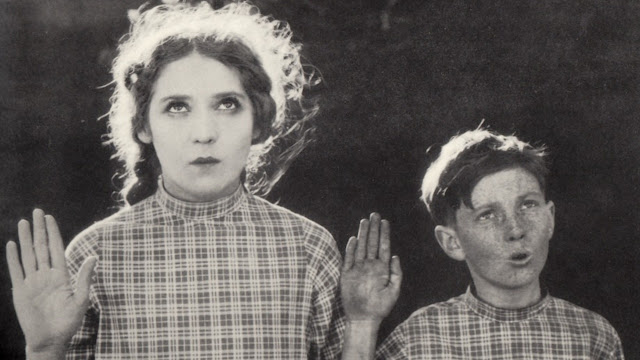May 15, 1919 [Daddy-Long-Legs/Broken Blossoms]
Between the on-screen version of Jean Webster’s epistolary novel/stage play and Griffith’s latest exploration of other-ness, the cinema these days seems full to bursting with sentiment and strange turns. Mary Pickford in Daddy-Long-Legs does her Chaplin impression (at least as a child) while Lillian Gish in Broken Blossoms suffers despair and cruelty. Both performers stand at the top of their careers—but I cannot help noticing the weirdness of the worlds they inhabit. Orphan Pickford resides in the “John Grier Home”—an obvious reference to the president of Princeton University, who himself is dedicated to supplying scholarships to deserving Westerners, cajoling the frontier to bloom among the ivy—and, after typically bizarre but humorous orphanage high-jinks (as always, I relish any moment that captures, no matter in how contrived a manner, the hidden lives of children, confronting the adult world—its bounty, its constrictions (even its inebriations)—especially in the netherworld of a surprisingly untended orphanage, in which all manner of revolution appears possible), Pickford finds herself educated and loved—but by whom? She is flabbergasted to discover: her adult benefactor, gray at the temples but ready for marriage. As the father of two daughters, I must admit the whole thing seemed a bit, well, untoward. But that’s standard in the cinema—where the solid middle of things is blandly asserted, home sweet home and all that, while the oddest narrative loops circle the characters (and the audience), daring us to object—or to acquiesce. Either option makes for a mysterious journey. As compelling as Gish and her made-up Oriental may be—and let’s not forget "Battling Burrows": Donald Crisp screwing up his face in half-guilty rage, the brutish father who beats her, in scenes of disquieting sadism (Griffith energetically loading his trowel, building improbable edifices—here East and West ne’er meeting—if so, always tragically); and as touching as are some of the scenes—particularly when Richard Barthelmess’ “Yellow Man” presents himself as not so much inscrutable in his downward gaze as he is immobile in his despair—and no matter how attractive is Griffith’s love of visual language (even his captions are often more narration/description than (as in Daddy-Long-Legs) dialogue—in the end I felt as though I had stumbled into some strange Poe-like dream of love lost so deeply it becomes darkly obscure, something a bit clammy and, ah, cerement-al. The plot steams and clanks along, but what remains for me is the willingness I feel to take it in—or is that be taken in? And of course this is the fun of it: part Ashcan portraiture, part Stravinsky audacity (although that fine Russian, even when he is silly, is still majestic)—each movement a surprise, whether sweet or churlish, a kind of narrative prank one sees coming a long way off, but—if the cinema is to be endured—is willing to wait and see.




Comments
Post a Comment